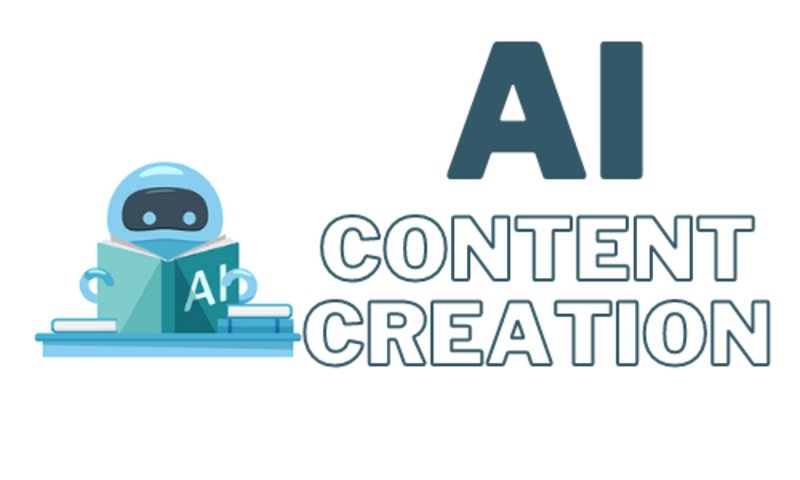In today’s digital age, content is king. But creating high-quality content consistently can be challenging. Enter AI writing tools. These tools are game-changers, making the process faster and easier. They help generate ideas, structure your writing, and even improve grammar and readability. But how do you get the most out of these tools? This article will dive deep into AI writing hacks that can elevate your content to the next level.
Understanding AI Writing Tools
What Are AI Writing Tools?
AI writing tools are software applications that use artificial intelligence to assist in writing. They can generate text, suggest corrections, and help with style and tone.
Some popular examples include Grammarly, Jasper (formerly Jarvis), and Copy.ai. These tools use natural language processing (NLP) to understand and generate human-like text.
Why Use AI Writing Tools?
The primary advantage of AI writing tools is efficiency. They save time by automating tedious tasks like proofreading and editing.
They also provide inspiration when you’re stuck, offering suggestions for topics or phrases. Moreover, they help maintain consistency in style and tone, which is crucial for brand identity.
Getting Started with AI Writing Tools
To start, choose the right tool for your needs. If you’re looking for grammar and style improvements, Grammarly is a great choice. For content generation, Jasper or Copy.ai might be better.
Familiarize yourself with the features of your chosen tool. Most of these tools have tutorials or help sections to get you started.
Generating Ideas and Outlines
Leveraging AI for In-Depth Market Research
For startup founders, generating content ideas that resonate with your target audience is crucial. AI tools can assist by conducting in-depth market research.
These tools analyze current trends, competitors, and audience preferences to provide a comprehensive understanding of what topics are currently relevant and engaging.
Start by inputting key industry terms and competitor URLs into your AI tool. The AI can then generate a report highlighting trending topics, popular keywords, and content gaps in your niche.
Use this data to brainstorm unique content ideas that address unmet needs or provide new perspectives on popular subjects.
Creating a Comprehensive Content Plan
A strategic content plan is essential for maintaining consistency and achieving your marketing goals. AI tools can help create a detailed content calendar based on your business objectives and audience insights.
Input your target audience’s demographics, interests, and pain points into the AI tool. It will suggest a variety of content types and topics, ensuring a balanced mix that caters to different stages of the buyer’s journey.
For instance, the AI might recommend educational blog posts for awareness, case studies for consideration, and testimonials for decision-making. This strategic approach ensures your content not only attracts visitors but also nurtures leads through the sales funnel.
Identifying Evergreen Content Opportunities
Evergreen content is valuable for maintaining long-term traffic and engagement. AI tools can help identify topics that have lasting relevance.
Analyze past content performance and industry trends to pinpoint subjects that consistently attract interest.
Once you’ve identified evergreen topics, use the AI tool to create comprehensive outlines. This might include detailed sections, key points, and subtopics. By thoroughly planning your content, you ensure it remains relevant and useful for an extended period, providing ongoing value to your audience.
Enhancing Content with Data and Insights
Startups often have access to unique data and insights that can be leveraged to create compelling content. AI tools can help you analyze and interpret this data, turning it into actionable insights that enhance your content.
For example, if you have usage statistics or customer feedback, the AI can identify trends and suggest ways to incorporate these findings into your articles.
By integrating data-driven insights, your content becomes more authoritative and credible. This not only engages your audience but also positions your startup as a thought leader in your industry.
Collaborating with AI for Creative Brainstorming
Creativity is vital for content that stands out, and AI tools can serve as valuable brainstorming partners. Engage with the AI in a conversational manner to explore different angles and perspectives on a topic.
For example, if you’re writing about “innovative marketing strategies,” ask the AI to suggest unconventional approaches or emerging trends.
This collaborative process can spark new ideas and creative solutions that you might not have considered. Use the AI’s suggestions as a springboard, and then add your unique insights and expertise to develop a robust and engaging content piece.
Structuring Outlines for Maximum Impact
A well-structured outline is the backbone of effective content. AI tools can assist in organizing your ideas logically and coherently. Start by defining the main objective of your content and the key message you want to convey.
Input this information into the AI tool, and it will suggest a structured outline with clear headings and subheadings.
Ensure each section flows logically into the next, guiding the reader smoothly through the content. The AI can also recommend where to place calls to action, links to related articles, or multimedia elements to enhance engagement and drive conversions.
Iterative Refinement of Ideas
Generating and refining ideas is an iterative process. Use AI tools to continuously refine your content ideas and outlines.
After drafting an initial outline, input it back into the AI tool for feedback and suggestions. The AI might highlight areas that need more detail, suggest additional subtopics, or recommend a different structure for better readability.
This iterative refinement ensures your content ideas and outlines are thoroughly developed and strategically aligned with your goals. Regularly revisiting and updating your outlines based on AI feedback keeps your content fresh, relevant, and impactful.
Integrating Customer Feedback
Customer feedback is a goldmine for content ideas. Use AI tools to analyze feedback from surveys, reviews, and social media interactions. Identify common questions, concerns, and interests expressed by your audience.
These insights can inform new content ideas and ensure your topics address real customer needs and preferences.
For example, if customers frequently ask about a specific feature of your product, create detailed content explaining its benefits and use cases. By directly addressing your audience’s interests, you increase engagement and build stronger connections with your readers.
Expanding on Core Topics
Start with broad topics related to your industry and use AI to drill down into specific subtopics. This approach ensures you cover a wide range of content that appeals to different segments of your audience.
For instance, if your core topic is “sustainable business practices,” the AI can suggest subtopics like “eco-friendly packaging,” “energy-efficient operations,” and “sustainable sourcing.”
Expanding on core topics in this manner not only provides comprehensive coverage but also establishes your authority in the field. Each subtopic can be developed into standalone articles, forming a cohesive content series that adds depth to your blog.
Balancing SEO and Readability
While SEO is essential for visibility, readability is crucial for engagement. AI tools can help strike this balance by suggesting keywords and phrases that fit naturally into your content.
Use the AI to identify relevant keywords and integrate them seamlessly into your outlines and drafts.
Focus on creating content that reads naturally and provides value to the reader. The AI can recommend ways to incorporate keywords without compromising the flow and readability of your content. This ensures your articles are both search-engine friendly and engaging for your audience.
Writing and Editing
Drafting with AI
When it comes to drafting, AI tools can help speed up the process. They can generate paragraphs or even entire articles based on your outline.
This is particularly useful for overcoming writer’s block. You can then edit and refine the generated content to match your style and voice.
Improving Readability
Readability is crucial for keeping your audience engaged. AI tools can analyze your text and suggest improvements to make it more readable.
This includes simplifying complex sentences, breaking up long paragraphs, and using more conversational language.
Grammar and Style
Grammar mistakes can undermine the credibility of your content. AI tools like Grammarly can automatically detect and correct grammar issues.
They also offer style suggestions, such as replacing passive voice with active voice or varying sentence structure to improve flow.
Optimizing for SEO

Deep Keyword Research with AI
Effective SEO starts with deep keyword research. AI tools can take your keyword strategy to the next level by providing in-depth analysis and suggestions.
Start by identifying primary and secondary keywords related to your industry. Input these into an AI-powered keyword research tool to uncover long-tail keywords, search volume data, and competition levels.
AI tools can also identify keyword gaps by analyzing your competitors’ content. This allows you to target underserved keywords that can attract significant traffic. Use these insights to create a keyword strategy that balances high-volume terms with low-competition opportunities, ensuring a comprehensive approach to SEO.
Crafting SEO-Friendly Headlines and Subheadings
Headlines and subheadings play a crucial role in SEO. AI tools can help you craft headlines and subheadings that are not only engaging but also optimized for search engines.
Start by inputting your main keyword into the AI tool. It will suggest variations that include the keyword while maintaining a natural flow.
Ensure your headlines are clear and descriptive, providing a concise summary of what the reader can expect. Use subheadings to break up your content and include secondary keywords where appropriate.
This not only improves readability but also enhances your content’s SEO by signaling to search engines the relevance and structure of your article.
Optimizing Content Length and Depth
Search engines favor comprehensive content that thoroughly covers a topic. AI tools can analyze your content and suggest areas where you can add more detail or expand on existing points.
Start by reviewing your content’s word count and comparing it to top-ranking articles for your target keywords.
Use AI to identify subtopics and related questions that you can incorporate into your content. This ensures your article is comprehensive and addresses multiple facets of the main topic.
Additionally, AI can help structure your content to ensure it flows logically, making it more engaging for readers and favorable for search engine algorithms.
Enhancing On-Page SEO Elements
On-page SEO elements, such as meta descriptions, alt texts for images, and internal links, are critical for optimizing your content.
AI tools can generate SEO-friendly meta descriptions that include your target keywords and provide a compelling summary of your content. These descriptions should entice users to click on your link, improving your click-through rate.
For images, AI can suggest relevant alt texts that describe the image content and include appropriate keywords. This not only improves accessibility but also enhances your SEO by providing additional context to search engines.
Internal linking is another crucial aspect. Use AI to analyze your existing content and identify opportunities for internal links. This helps distribute link equity throughout your site and improves the overall user experience by guiding readers to related content.
Leveraging AI for Content Refresh
Keeping your content updated is essential for maintaining its SEO value. AI tools can help identify older articles that need refreshing based on changes in search trends and new information.
Input your content library into the AI tool to get recommendations on which articles to update and how to enhance them.
Updates might include adding new data, incorporating recent developments, or optimizing the content for new keywords. Regularly refreshing your content ensures it remains relevant and continues to perform well in search engine rankings.
Utilizing AI for Voice Search Optimization
With the rise of voice search, optimizing your content for voice queries is becoming increasingly important. AI tools can help you understand how people phrase their voice search queries differently from text searches.
These queries are often longer and more conversational. Use AI to generate content that answers these voice search queries directly.
Incorporate natural language and question-based phrases into your content. This improves your chances of being featured in voice search results, expanding your reach to users who rely on voice-activated devices.
Monitoring and Adjusting SEO Strategies
SEO is not a set-and-forget strategy. Continuous monitoring and adjustments are necessary to maintain and improve your rankings.
AI tools can provide real-time analytics on your content’s performance, highlighting areas for improvement. Regularly review metrics such as organic traffic, bounce rate, and keyword rankings.
Use AI insights to adjust your content strategy. If certain keywords are underperforming, tweak your content to better target these terms. Similarly, if you identify high-performing keywords, consider creating more content around these topics.
This iterative approach ensures your SEO strategy evolves with changing search trends and user behavior.
Optimizing for Local SEO
For startups targeting local markets, local SEO is crucial. AI tools can help optimize your content for local search queries. Start by including location-based keywords in your content, meta descriptions, and alt texts.
AI can suggest the most relevant local keywords and phrases to incorporate.
Additionally, use AI to analyze local competitors and identify content opportunities specific to your region. Creating content that addresses local interests and events can improve your visibility in local search results. Ensure your business’s contact information is consistent across all platforms, and use AI to manage and optimize your local listings.
Enhancing Mobile SEO
With the increasing use of mobile devices, optimizing your content for mobile users is essential. AI tools can analyze your site’s mobile performance and suggest improvements.
Ensure your content is mobile-friendly by using responsive design, fast loading times, and easy navigation.
AI can help optimize your mobile content layout, ensuring it is accessible and engaging on smaller screens. Focus on concise and clear writing, as mobile users often scan content quickly.
Enhancing your mobile SEO ensures you reach a broader audience and provide a seamless user experience across all devices.
Integrating AI with SEO Tools
Integrate AI tools with your existing SEO platforms for a more comprehensive strategy. Combining AI insights with tools like Google Analytics, SEMrush, or Ahrefs provides a deeper understanding of your SEO performance.
Use AI to automate data collection and analysis, freeing up time for strategic planning and content creation.
This integrated approach ensures you have a holistic view of your SEO efforts, allowing you to make data-driven decisions and continuously refine your strategy for maximum impact.
Enhancing Engagement
Crafting Compelling Introductions
The introduction sets the tone for your entire piece. A compelling introduction grabs the reader’s attention and makes them want to read more.
AI tools can help craft powerful openings. Input your topic and key points, and the AI can suggest engaging introductions. These might include interesting facts, questions, or anecdotes related to your topic.
Developing Strong Headlines
Headlines are crucial for drawing readers in. A good headline is clear, intriguing, and promises value.
AI tools can generate multiple headline options based on your content. Experiment with different suggestions to find the one that best captures your audience’s interest. For example, instead of “AI in Writing,” you might get “Revolutionize Your Writing with These AI Hacks.”
Building Engaging Content
Keeping readers engaged throughout your article is essential. AI tools can help by suggesting ways to make your content more interactive and interesting.
This might include incorporating storytelling elements, adding questions to prompt reader reflection, or suggesting examples and anecdotes to illustrate your points.
Personalizing Content
Understanding Your Audience
Personalized content resonates better with readers. AI tools can analyze your audience’s preferences and suggest ways to tailor your content.
This could involve using a more conversational tone, addressing specific pain points, or incorporating relevant examples and references.
Customizing Tone and Style
Different audiences prefer different tones and styles. AI tools can help adjust your writing style to match your audience.
Whether you need a formal tone for a business article or a casual, friendly tone for a blog post, AI can suggest changes to ensure your content aligns with your audience’s expectations.
Incorporating Feedback
AI tools can also incorporate feedback from your audience. Analyze comments, likes, and shares to understand what resonates most.
Use AI to adjust your content strategy based on this feedback, ensuring you’re consistently meeting your audience’s needs and preferences.
Leveraging AI for Different Types of Content

Blog Posts
For blog posts, AI can help generate ideas, draft content, and optimize for SEO. Use AI to brainstorm topics, create outlines, and write initial drafts. Then refine and personalize the content based on your audience and feedback.
Social Media Content
Social media content needs to be concise and engaging. AI tools can help craft catchy posts that capture attention and drive engagement.
They can suggest hashtags, optimal posting times, and even generate images or graphics to accompany your text.
Email Marketing
Emails should be personalized and compelling to drive conversions. AI tools can analyze your audience and suggest personalized subject lines, opening sentences, and content.
They can also help segment your audience and tailor messages to different groups for maximum impact.
Long-Form Content
For longer content like eBooks or whitepapers, AI tools can help structure and draft the content. They can suggest ways to break up the text with headings, subheadings, and visuals to keep readers engaged.
AI can also ensure the content flows logically and covers all necessary points in depth.
Overcoming Common Challenges with AI
Avoiding Plagiarism
One concern with using AI tools is the risk of plagiarism. Ensure your content is original by using plagiarism checkers alongside AI writing tools.
These checkers can compare your text against a vast database of online content to ensure it’s unique.
Maintaining Authenticity
While AI tools can assist with writing, maintaining your unique voice and authenticity is crucial. Use AI suggestions as a starting point, but always add your personal touch. This ensures your content stands out and truly represents your brand.
Balancing Automation and Creativity
AI tools are great for efficiency, but don’t rely on them entirely. Balance automation with your creative input. Use AI to handle repetitive tasks and generate ideas, but infuse your creativity and expertise into the final content.
This balance ensures your content is both efficient and unique.
Measuring and Improving Content Performance
Analyzing Engagement Metrics
To understand how well your content is performing, it’s essential to track engagement metrics. These include page views, time on page, bounce rate, and social shares.
AI tools can analyze these metrics and provide insights into what works and what doesn’t. For example, if a particular blog post has a high bounce rate, the AI might suggest improvements to the introduction or content structure to keep readers engaged longer.
A/B Testing with AI
A/B testing is a powerful method to determine what resonates best with your audience. AI tools can assist by automating the process of creating different versions of your content and analyzing the results.
Test different headlines, introductions, or even call-to-actions to see which version performs better. The AI can provide insights into why one version outperformed the other, helping you refine your content strategy.
Refining Content Based on Feedback
Collect feedback from your audience through comments, surveys, or social media interactions. AI tools can analyze this feedback to identify common themes and suggestions.
Use these insights to refine your content, ensuring it meets your audience’s needs and preferences. For example, if readers frequently ask for more detailed explanations or additional examples, incorporate these elements into future content.
Advanced AI Writing Hacks
Using AI for Real-Time Editing
Real-time editing tools powered by AI can significantly enhance your writing process. Tools like Grammarly or Hemingway App can provide instant feedback on grammar, style, and readability as you write.
This immediate feedback helps you make corrections on the fly, ensuring your content is polished and error-free from the start.
Integrating AI with Other Tools
To maximize efficiency, integrate AI writing tools with other software you use. For instance, integrate your AI tool with content management systems (CMS) like WordPress or marketing platforms like HubSpot.
This seamless integration allows for smoother content creation, optimization, and distribution workflows.
Staying Updated with AI Developments
AI technology is constantly evolving, with new tools and features being developed regularly. Stay updated with the latest advancements in AI writing technology.
Follow industry blogs, attend webinars, and participate in online forums to learn about new tools and techniques. Keeping abreast of these developments ensures you can leverage the most advanced AI capabilities for your content creation.
Ethical Considerations in AI Writing
Ensuring Transparency
Transparency is crucial when using AI in content creation. Always disclose when content has been generated or significantly assisted by AI tools.
This transparency builds trust with your audience, ensuring they understand the role AI plays in your content.
Maintaining Human Oversight
While AI tools are powerful, maintaining human oversight is essential. Always review and edit AI-generated content to ensure it aligns with your brand voice and meets quality standards.
Human creativity and judgment are irreplaceable, and AI should be viewed as a supportive tool rather than a replacement for human writers.
Avoiding Over-Reliance on AI
AI tools should enhance your writing process, not replace it entirely. Avoid over-relying on AI to generate content.
Use AI for inspiration, efficiency, and optimization, but ensure the core ideas and creativity come from you. This balance ensures your content remains unique and authentic.
Future of AI in Content Writing

Evolving Capabilities
AI technology is rapidly advancing, with new capabilities being developed continuously. Future AI tools may offer even more sophisticated writing assistance, from advanced tone and style adjustments to more nuanced content generation.
Staying informed about these advancements will ensure you can leverage the latest tools to enhance your content.
Human-AI Collaboration
The future of content writing lies in effective human-AI collaboration. By combining the efficiency and analytical power of AI with human creativity and insight, you can create content that is both high-quality and highly engaging.
Embrace AI as a collaborative partner, and continuously seek ways to optimize this partnership.
Preparing for Changes
As AI technology evolves, the content creation landscape will continue to change. Be prepared to adapt to these changes by staying flexible and open to new tools and techniques.
Invest in ongoing learning and development to ensure you can effectively integrate AI into your content strategy.
Wrapping it up
AI writing tools are transforming the landscape of content creation, offering startup founders unprecedented opportunities to enhance efficiency, creativity, and SEO performance. By leveraging AI for generating ideas, crafting compelling outlines, drafting and editing content, and optimizing for SEO, you can create high-quality, engaging content that resonates with your audience and drives growth.
The key to success lies in balancing the power of AI with human creativity and authenticity. Use AI to handle repetitive tasks, provide data-driven insights, and suggest optimizations, but always infuse your unique voice and expertise into the content. This approach ensures your content is not only efficient and optimized but also genuine and impactful.
READ NEXT:
- The Future of Location-Based Marketing: Vital Statistics and Trends
- Small Business Marketing: Key Statistics to Drive Your Strategy
- Aligning Sales and Marketing Teams: Statistics and Benefits
- The Link Between Social Media and Eating Disorders: Eye-Opening Statistics
- Marketing Strategies to Grow Your Candle Business






















Comments are closed.